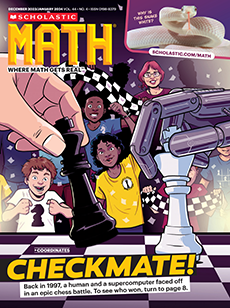Hold a class discussion on making choices related to what to buy at a grocery store. Ask students: If you go to a grocery store to buy a package of cookies, how do you decide which package to buy? (Answers will vary. Students may talk about a favorite flavor/brand, they may mention a particular size that lets them get the most cookies for the best value, or they may choose the size that actually contains the number of cookies they want, no matter the unit price.) Tell students that one way a person might decide which package to buy is by thinking about the unit price—the price of each cookie in the package. Then tell students that they will be learning about unit rates in the article they read today.
CCSS: 6.RP.A.2, 6.RP.A.3.B, MP1, MP2, MP3
TEKS: 6.4B, 7.4B, 7.4D
